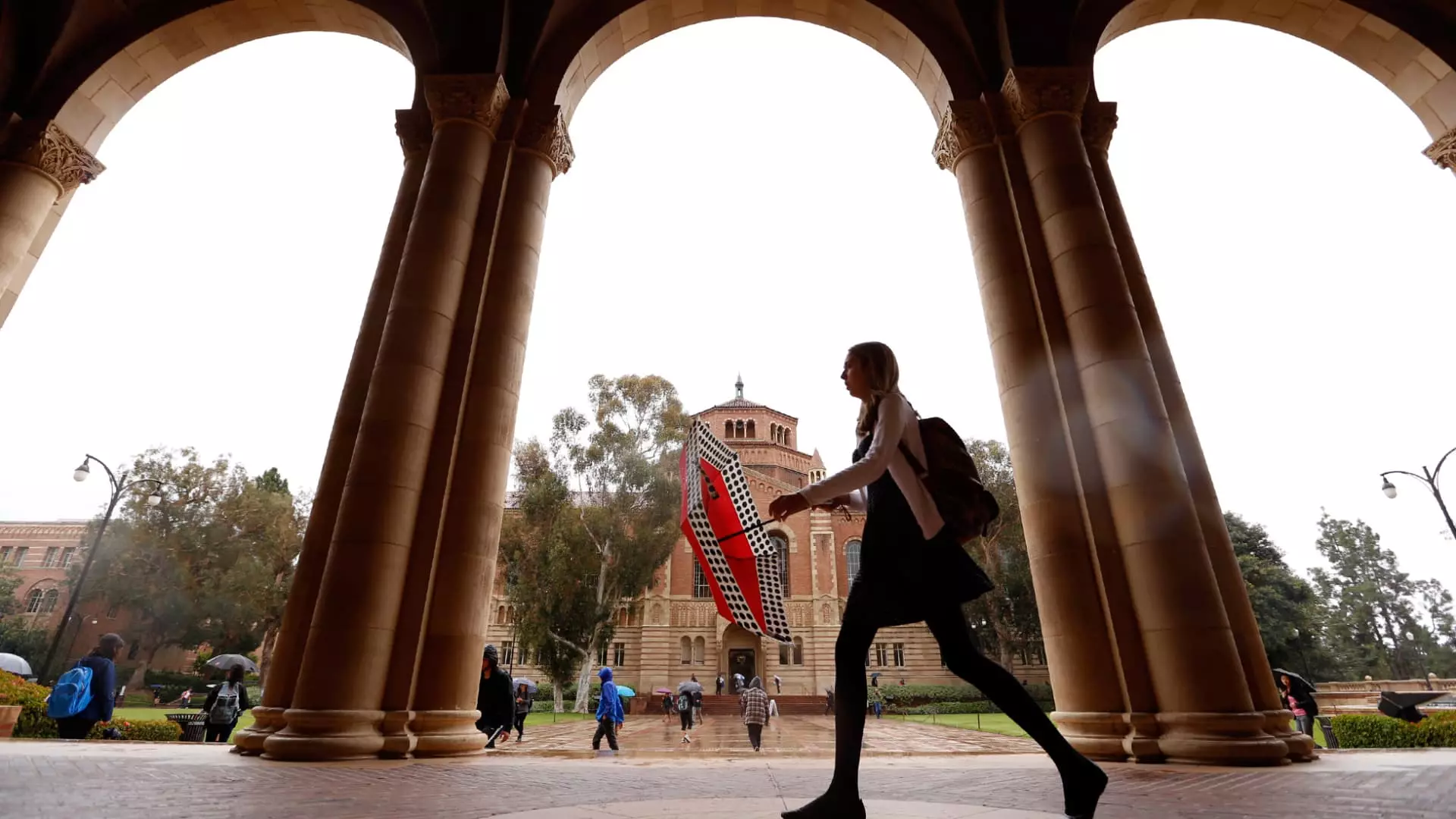The landscape of American higher education is experiencing a notable shift, one that raises important questions about accessibility and the future of student enrollment. Despite an increase in federal financial aid eligibility, a disconcerting trend has emerged: fewer high school graduates are choosing to pursue traditional four-year degrees. An analysis from the National Student Clearinghouse Research Center paints a worrying picture, indicating a 5% drop in new first-year students compared to the previous year—an alarming trend, particularly as this marks the first decline since the onset of the COVID-19 pandemic.
Doug Shapiro, the executive director of the National Student Clearinghouse, expressed concern over these numbers. The decline appears particularly pronounced among four-year institutions that predominantly serve low-income populations, with first-year student enrollment plummeting by over 10% in some cases. This scenario illustrates a growing divide in education access, where financial resources increasingly dictate the feasibility of pursuing higher education.
Compounding this issue is the complexity surrounding financial aid availability and the challenges posed by the FAFSA (Free Application for Federal Student Aid) process. Although recent reforms to the FAFSA aim to simplify the application process and expand Pell Grant eligibility, reports indicate that many prospective students are disillusioned. Last year, 45% of applicants expressed frustration with the FAFSA, resulting in a significant number of students opting for community colleges, technical schools, or other alternatives instead.
Currently, approximately 10% more students are projected to qualify for Pell Grants, which are intended to assist low- and middle-income families seeking to fund college education. However, even with an increase in potential recipients, the overall number of Pell Grant awardees has significantly decreased from its peak in the 2011-12 academic year. This reduction raises critical concerns about the financial support available to students, especially at a time when college tuition continues to rise.
The cost of attending college has become a growing concern, with some private institutions now charging nearly $100,000 annually when factoring in tuition, fees, and room and board. Many experts warn that the maximum Pell Grant award of $7,395 falls short of covering the escalating expenses associated with higher education. In contrast, tuition at public four-year institutions has also seen an increase, now averaging around $24,920 for in-state students.
This disparity brings forth a pressing question: Is the return on investment in a four-year degree justifiable? As student debt levels continue to swell, many young individuals reflect on the potential value of a degree against the financial burden it entails. Jamie Beaton, a CEO at Crimson Education, highlights a “growing skepticism” regarding the utility of a college education, contributing to a trend where students are increasingly questioning their pursuit of traditional degree paths.
This skepticism has catalyzed a notable shift towards alternative education paths. Enrollments in certificate programs have surged, complementing the growing interest in shorter-term education options that often come with less financial risk. data indicates that enrollments in these programs rose by an impressive 7.3%, suggesting a recalibration in how students perceive their educational journeys.
As students weigh the costs and benefits of a four-year degree against alternatives, higher education institutions must adapt to this evolving landscape. Developing affordable and accessible programs will be crucial for attracting and retaining students. Institutions might consider revisiting their financial aid offerings, enhancing support systems, and simplifying the enrollment processes to better meet the needs of a diverse student body.
The recent declines in first-year college enrollment highlight urgent challenges facing higher education today. As students grapple with rising costs, cumbersome financial aid processes, and shifting perceptions of degree value, institutions must reassess how they position themselves within the educational ecosystem. Addressing these challenges and committing to equitable access will be essential for ensuring the relevance and sustainability of higher education in an increasingly diverse and discerning student population.

